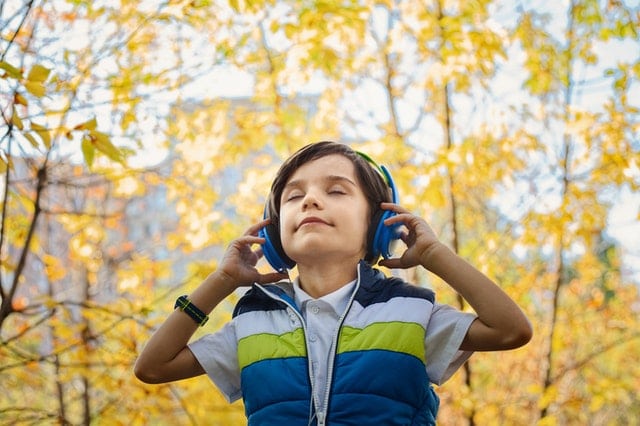Headphone use is not new. The first Walkman was invented in 1979, over 40 years ago! However, the popularity of on-the-go headphone- and earbud-use has certainly increased in recent years, thanks to smartphones making music, podcasts, audiobooks, TV shows and even full-length movies accessible anytime, anywhere.
Unfortunately, many of our listening habits can have negative effects on our hearing. Children are especially susceptible to this risk; in fact, the CDC estimates that one in eight children experiences noise-induced hearing loss.
Why Are Headphones Unsafe?
Any sound over 85 decibels (dB) can cause permanent hearing damage over time. For reference, 85 dB is about the volume of a powerful upright vacuum cleaner. Most headphone sets max out around 100 dB, which can cause damage in as little as 15 minutes.
Even headphones designed specifically for children, which max out at 85 dB, can be problematic.
“Treating 85 decibels as a safe level makes no sense at all,” explained Rick Neitzel, Ph.D., associate professor of environmental health sciences at the University of Michigan. “Exposure is not just intensity — it is also how long it lasts and how frequently it occurs. Ignoring the time is missing the point. This 85-decibel number has achieved mythical status not because it is safe but because it is one of the few ways that occupational noise is regulated.”
Children’s headphones are also often marketed as having comfortable ear pads and a long battery life for all-day listening. But the longer the exposure, the more likely damage is to occur, even if the volume does not exceed 85 dB.
What Level Is Safe?
According to Drs. Neitzel and Fligor, authors of a recent paper on recreational sound exposure and consultants to the World Health Organization’s Make Listening Safe program, 70 dB is a safe limit for unlimited headphone use. Eighty-three dB is a safe threshold if exposure is less than eight hours.
It is important to keep in mind that unsafe noise levels have more sources than just headphones. When considering how loud and how long your child can listen to music safely, you must also consider whether they’re exposed to other sounds, like when mowing the lawn or practicing an instrument.
What Can Parents Do to Keep Children’s Ears Safe?
Parents should check to make sure no sound is leaking from their child’s headphones – that is, that their music or media can’t be heard when standing next to them. The child should also be able to hear others speaking while they’re wearing headphones. Most devices have parental control settings, where a volume max can be set.
Children’s hearing should be tested every three years in order to detect possible loss and allow early intervention to ensure proper speech-language development.
For more information or to schedule an appointment, call Arizona Hearing Specialists today.
